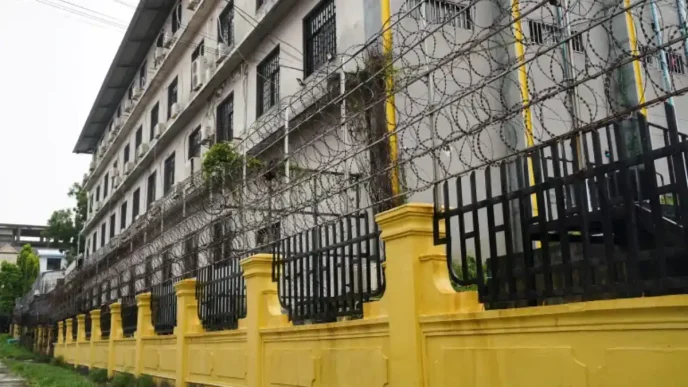Malaysia is considering increasing rice imports from regional neighbors such as Thailand, Vietnam, and Cambodia as escalating tensions between India and Pakistan threaten to disrupt its supply chain. With the two South Asian nations accounting for nearly 38% of Malaysia’s rice imports, the ongoing conflict has raised concerns about food security, prompting the government to explore alternative sources to ensure a steady supply for its population.
Conflict Disrupts Key Supply Lines
The Agriculture and Food Security Minister, Datuk Seri Mohamad Sabu, acknowledged the potential impact of the turmoil in India and Pakistan during a press conference in Parit Buntar, Perak, on May 6, 2025. Speaking after the opening of the Perak Farmers’ Organisation’s Certified Padi Seed Production Centre, he expressed hope that the conflict would not escalate into a full-scale war. However, he emphasized the government’s readiness to act swiftly to safeguard rice availability.
“Yes, the import supply could be affected because these two countries export about 38% of rice to Malaysia” said Mohamad Sabu, as reported by Bernama. “However, we will cooperate with countries such as Thailand, Vietnam, and Cambodia to ensure sufficient rice supply in the country.”
The tensions between India and Pakistan intensified following a violent attack in Kashmir on April 22, 2025, which resulted in 26 fatalities. International reports suggest that the incident has fueled diplomatic friction and raised fears of further instability in the region. For Malaysia, a nation heavily reliant on imported rice to meet domestic demand, the situation underscores the fragility of global supply chains in times of geopolitical unrest.
Regional Partnerships as a Buffer
Malaysia’s pivot to Southeast Asian neighbors reflects a strategic move to diversify its import sources and reduce dependency on any single region. Thailand, Vietnam, and Cambodia are among the world’s top rice exporters, with Vietnam alone producing over 40 million tonnes annually, according to data from the Food and Agriculture Organization. These countries have long-standing trade ties with Malaysia, making them viable partners in addressing potential shortfalls.
Analysts suggest that this shift could have long-term benefits beyond the immediate crisis. “Diversifying rice imports strengthens Malaysia’s food security framework” said Dr. Aminah Rahman, an agricultural economist based in Kuala Lumpur. “It also fosters closer economic ties within ASEAN, which could lead to more stable pricing and supply agreements.”
However, challenges remain. Importing from regional partners may involve higher transportation costs or differing quality standards compared to Indian and Pakistani varieties, such as basmati, which are popular among Malaysian consumers. Additionally, ramping up import volumes from Thailand or Vietnam could strain their own domestic supplies, potentially affecting prices in the region. While no official figures have been released, industry insiders estimate that securing alternative supplies could involve costs of 2,000-3,000 Thai Baht (US$56-84) per tonne in additional logistics expenses.
Domestic Efforts to Boost Rice Production
Amid external uncertainties, Malaysia is also focusing on bolstering its domestic rice industry. The newly inaugurated Certified Padi Seed Production Centre in Perak, officiated by Sultan Nazrin Muizzuddin Shah, is a key part of this strategy. The facility is expected to produce 250,000 bags of certified padi seeds annually, with a total capacity of 5,000 tonnes, benefiting around 16,000 padi farmers across the state.
“I believe that with the setting up of this production centre, development in this district will follow” said Mohamad Sabu. “Economic and social development are among the benefits that will be enjoyed by the community, either directly or indirectly.”
Similar centers have been established in Penang, Selangor, and Kedah, forming a network aimed at enhancing the quality and availability of certified seeds. The minister highlighted that reforming the national padi and rice industry remains a priority for the government, with goals extending beyond self-sufficiency to elevating the sector and increasing farmers’ incomes. This includes modernizing agricultural practices and improving access to high-yield seed varieties, which could reduce Malaysia’s reliance on imports over time.
Yet, achieving self-sufficiency in rice production is a long-term endeavor. Currently, Malaysia produces only about 60-70% of its domestic rice needs, according to the Ministry of Agriculture and Food Security. Bridging this gap requires significant investment in infrastructure, technology, and farmer training—efforts that may take years to yield results.
Egg Prices and Food Inflation Concerns
Beyond rice, Mohamad Sabu addressed concerns about potential food inflation, particularly regarding chicken eggs. Speculation has arisen that egg prices could rise by up to three sen per egg following the full removal of government subsidies on August 1, 2025. The Federation of Livestock Farmers’ Associations of Malaysia warned that production costs, currently at 38 sen per egg, could drive prices higher if subsidies are not replaced with alternative support mechanisms.
The minister, however, downplayed these fears, calling the predictions speculative. “It’s just a projection” he said. “With global feed costs like soy and grain corn on a downward trend, we hope egg prices will also remain steady.”
He also pointed to government initiatives such as the “Jualan Rahmah” and “Jualan Agro” programs, which aim to ensure adequate supply and prevent panic buying. Past fluctuations in chicken prices, he noted, had not led to sustained increases, suggesting a similar outcome for eggs. Still, consumer advocacy groups argue that the government must remain vigilant, as even small price hikes can disproportionately affect low-income households.
Geopolitical Risks and Food Security
The India-Pakistan conflict serves as a stark reminder of how geopolitical events can ripple through global markets, impacting nations far beyond the conflict zone. For Malaysia, a net food importer, such disruptions highlight the importance of a robust food security strategy. The government’s dual approach—securing alternative imports while investing in domestic production—offers a pragmatic response, but it is not without risks.
One key concern is the potential for regional competition over rice supplies. If other importing nations affected by the India-Pakistan situation turn to the same ASEAN exporters, Malaysia could face bidding wars or supply shortages. Moreover, climate change poses an additional threat to rice production in Southeast Asia, with erratic weather patterns already affecting yields in countries like Thailand and Vietnam.
Internationally, the situation in South Asia remains fluid. While both India and Pakistan have signaled a desire to avoid full-scale conflict, sporadic violence and diplomatic standoffs continue to unsettle markets. Rice export bans or restrictions, as seen during past crises, could exacerbate Malaysia’s challenges if the situation deteriorates further. For now, no such measures have been announced, but the possibility looms large over trade negotiations.
Broader Implications for Malaysia
The current crisis also underscores broader economic vulnerabilities for Malaysia, where food security is intertwined with inflation, consumer confidence, and rural development. Rice, as a staple food, holds cultural and economic significance, making supply disruptions a politically sensitive issue. The government’s ability to manage this situation will likely influence public perception ahead of future elections, particularly in rural constituencies where agriculture remains a livelihood for many.
At the same time, initiatives like the Certified Padi Seed Production Centre signal a commitment to long-term agricultural reform. By empowering local farmers with access to quality seeds and modern techniques, Malaysia aims to build resilience against external shocks. Whether these efforts can keep pace with immediate challenges, however, remains to be seen.
Mohamad Sabu’s optimism about avoiding panic buying and stabilizing prices reflects a broader governmental stance of reassurance. Yet, as global uncertainties persist, from geopolitical conflicts to fluctuating commodity costs, Malaysia’s food security strategy will be tested. For now, the nation watches closely, balancing regional partnerships and domestic innovation to keep rice on the table.
As the situation unfolds, questions linger about the sustainability of Malaysia’s import diversification and the pace of its agricultural reforms. With millions relying on affordable food supplies, the stakes could not be higher.














